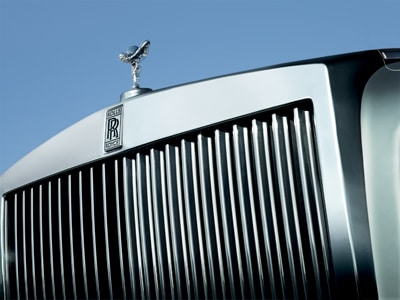Marc Mielau, General Manager, Marketing at Rolls-Royce Motor Cars, talks to Figaro Digital about social media’s role in making the ultimate aspirational brand more approachable
Brands don’t come much more iconic than Rolls-Royce Motor Cars: the 111-year-old manufacturer occupies a unique place not just in the motor industry, but in Britain’s cultural heritage. Few brands, after all, can boast the patronage of both the Queen (whose 1950 Phantom IV is still in use) and David Beckham. Acquired by BMW in 1998 and built in Goodwood, West Sussex since 2003, the company recently set its fifth consecutive sales record, with 4,063 vehicles sold.
From a marketing perspective, however, iconic, historic brands with devoted followers face unique challenges. Tradition needs to be weighed against contemporary relevance. Accessibility must go hand in hand with an experience that reflects the brand’s leadership in luxury. These have been some of the points on the Rolls-Royce roadmap – a voyage that’s seen the brand attempting to reach a wider digital audience and reshape public perception by telling the stories behind the marque.
Driving engagement
“The introduction of 102EX, the Experimental Electric Rolls-Royce Phantom in 2011, was a key milestone in our social journey. This experimental vehicle allowed us to generate a public debate about the idea of an electric super-luxury vehicle,” says General Manager Marketing, Marc Mielau. “That went very well and we decided at the end of that campaign that we’d make the transition to a brand channel. We want to let people know that we’re a modern, forward-thinking brand and social media is the ideal channel for us to do that.”
A Channel 4 documentary in March 2014 helped in that process and generated a flurry of interested press coverage. One of the principal tools online has been #InsideRollsRoyce. The hashtag accompanies a touring exhibition where people can get up close and personal with the brand and its cars, which have a starting price of more than £200,000 but can extend into seven figures.
“The immersive brand experience is part of a strategy to open the brand to a wider audience than ever before. Indeed, we have long been inspired by the notion that this marque captivates an audience far beyond the 4,000 people who commissioned a motor-car last year. This exhibition and its amplification through social media is an excellent way of educating a large audience on what makes the brand so special. Inside Rolls-Royce explains what happens at the Home of Rolls-Royce in Goodwood. When people come to the event they’re amazed at the work and craftsmanship that goes into every model: there are 44,000 shades of paint, for example. From the wood and its marquetry to the leather with its embroidery, everything is handcrafted.”
In an extraordinary celebration of the brand’s own heritage, a one-off 2013 Rolls-Royce Celestial Phantom featured a diamond-studded interior and hundreds of LED lights representing the night sky as it was when the first Phantom left the newly opened Goodwood factory in 2003. The design was echoed in the vehicle’s picnic set. Though the model didn’t feature in the exhibition, it provides a giddying sense of the luxury associated with the brand. That attention to detail, says Mielau, is what Rolls-Royce wanted to take to the wider public.
The free, four-day Inside Rolls-Royce exhibition took up nine rooms at the Saatchi Gallery in London. The brand’s craftspeople were on hand to demonstrate their skills and an app acted as visitors’ ‘concierge’. Making use of interactive exhibits, gamification techniques and the latest iBeacon technology as well as social media, highlights at the event included an opportunity for users to transform themselves into the brand’s bonnet ornament the Spirit of Ecstasy. Agency Imagination worked with iCrossing and Rolls-Royce to create a multichannel narrative that drove positivity and fuelled discussion. The hashtag helped achieve 122 per cent fan growth across eight platforms during 2014 and a footfall of 14,000 translated into more than 40 million hashtag impressions, proving that Rolls-Royce is part of the sharing economy.
Equity and exclusivity
All very impressive, of course. But is there ever a tension between making a luxury brand like Rolls-Royce more accessible and diminishing its expensive equity?
“I don’t think so,” says Mielau. “It all comes down to aspiration. We’re building and reinforcing a feeling of warmth towards the brand and I don’t think that degrades the exclusivity in any way.”
That same exclusivity means that the brand’s marketing has slightly different aims from those of conventional motor manufacturers, who may be looking to get users into dealerships or book themselves a test drive.
“For motor brands those sorts of strategies are a good source of leads. You put an offer out there and get users to click on it. As a super-luxury brand we reach out to influencers who may then have an impact on changing people’s perception of the brand. The stories we tell are all about our products and what goes into making them.”
As Mielau acknowledges, plenty of Rolls-Royce’s most devoted followers may never actually own the brand’s product. Social media helps bridge the gap between aspiration and reality and, tellingly, one of the first things most visitors to the Inside Rolls-Royce exhibition do is take a selfie of themselves with the cars.
“We want everyone to have the chance to get up close and personal with our motor-cars. This shouldn’t detract from maintaining that sense of scarcity and aspiration associated with the brand. We want to stimulate people’s emotions and inspire greatness.”
http://www.rolls-roycemotorcars.com//
By Jon Fortgang



